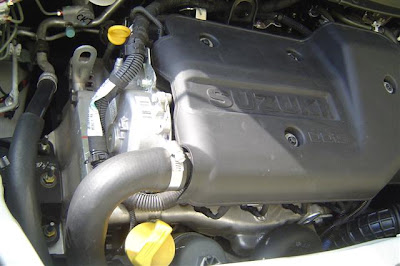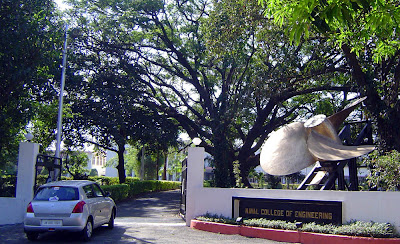At the end of this reasonably long drive, some statistics could be interesting to like-minded folks :
Total distance covered during
Jamshedpur-Kolkata-Delhi-Jamshedpur trip :
3836 km
Total fuel consumed :
181 litres (Rs 6060 approx)
Average mileage over entire trip :
21.2 kmplMax mileage measured over some stretches :
24 kmplTotal duration of trip : 21 days
Days on road : 11 days
Jam to Kol : 1 day (292 km)
Kol to Delhi : 6 days (248 km + 261 km + 280 km + 332 km + 322 km + 215 km)
Delhi to Jam : 4 days (198 km + 285 km + 612 km + 258 km)
The bottomlineDuring this 3836 km long drive, my Swift VDi has exceeded my expectations. The performance of the
engine, both at low and high speeds, has been simply great. I drove between 100-120 kmph over vast distances and did spurts of 130-140 kmph over short periods. At 140 kmph, the car felt rock steady and the engine was smooth, no louder than a similar petrol engine and far from struggling – actually, it was begging for more. The acceleration (pick-up) is superb at all speeds and I could quickly and safely overtake most other vehicles on the highways whenever I wanted to.

The
brakes are very powerful and allow the driver to remain in total control at high speeds. Though I have not tried out hard braking even once in my new car, the rate of decceleration experienced by me at high speeds even by gentle braking has given me enough confidence on the braking system of my Swift.
The electronic power
steering is quite effective at all speeds and I am fully satisfied with it.
Before purchasing the car I had read somewhere (on the net) that the diesel Swift
clutch is a bit hard and so I was a bit apprehensive about it. However, my personal experience is that the clutch is very very smooth.
I have found the
aircon quite effective so far but I would reserve my final verdict on it only after checking out its performance during the summer of 2008 at Jamshedpur.
The
suspension seems to be strong and reasonably solid – only time will tell how sturdy it proves over the bad roads of Jharkhand in the long run.

As far as
fuel economy is concerned, my Swift VDi is a real champ. My average fuel cost over this entire 3836 km long drive was just 1.58 INR per km! Getting an average of
21.2 kmpl over this entire trip (which includes city driving, long bad stretches requiring driving in 1st / 2nd gear, etc.) with the AC on around 70% of the time for this 1075 kg (kerb weight) car is truly a marvel of technology. Please note that I mostly drove between 90-120 kmph on the good stretches and was not trying to set a mileage record (by driving at a steady speed of 60 kmph or so). Even then, I measured mileage of
24 kmpl on some stretches. One can’t ask for more and don’t forget that diesel is still much cheaper than petrol in India.
Coming to shortcomings, the only thing that comes to my mind after using the car for 5 weeks is the
interiors. Though functional and ergonomically designed, I find the interiors rather ‘plastic-y’ and lacking class. Even my Maruti Esteem had a better dashboard (a non-plasticy material with a soft feel and classy look), a steering wheel which was softer to the touch even without an add-on cover, a lockable glove-box and better upholstery. One can’t have everything, I suppose, for Rupees 5 lakhs.











